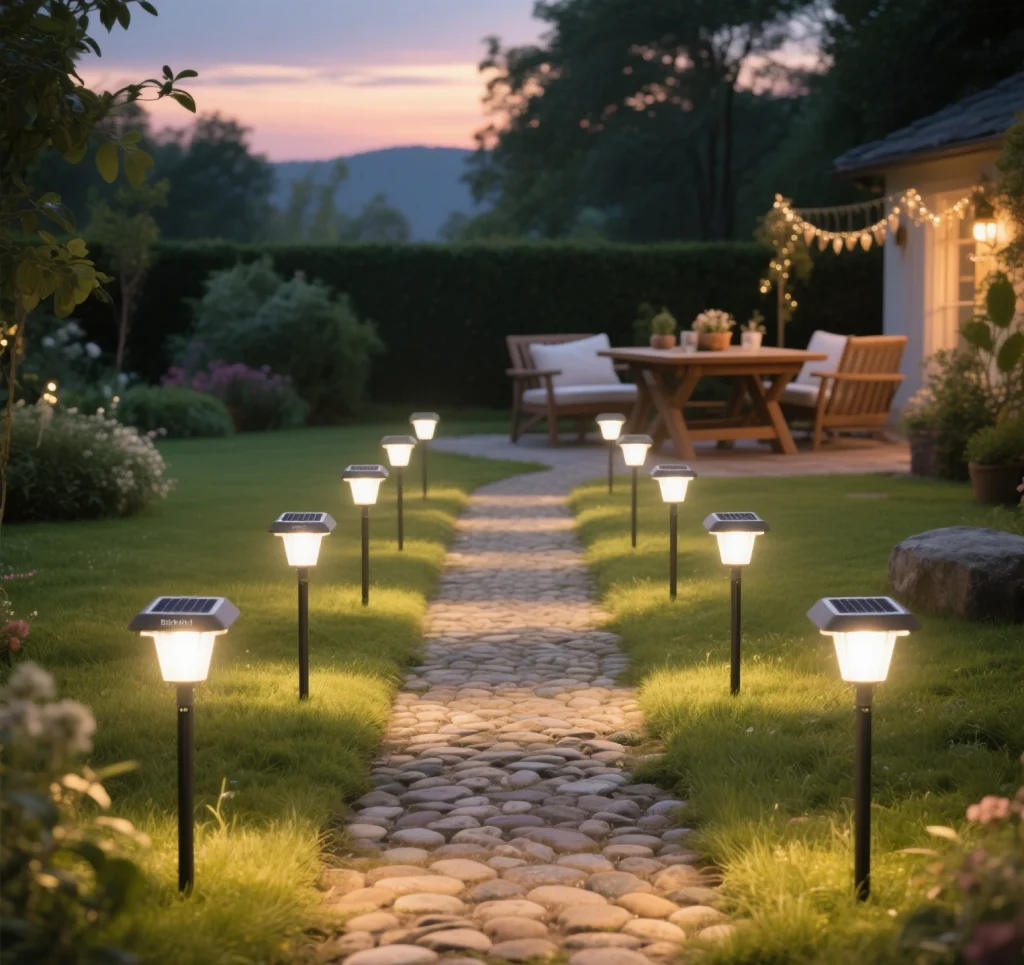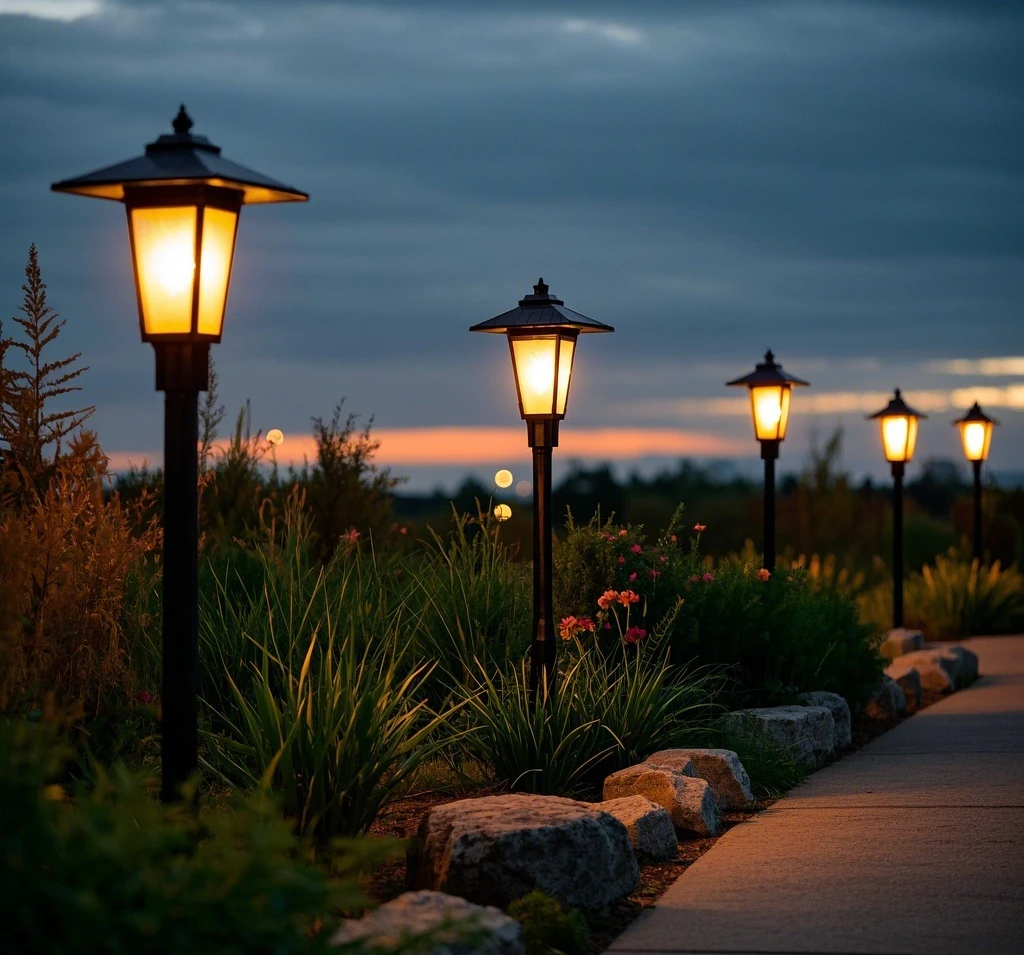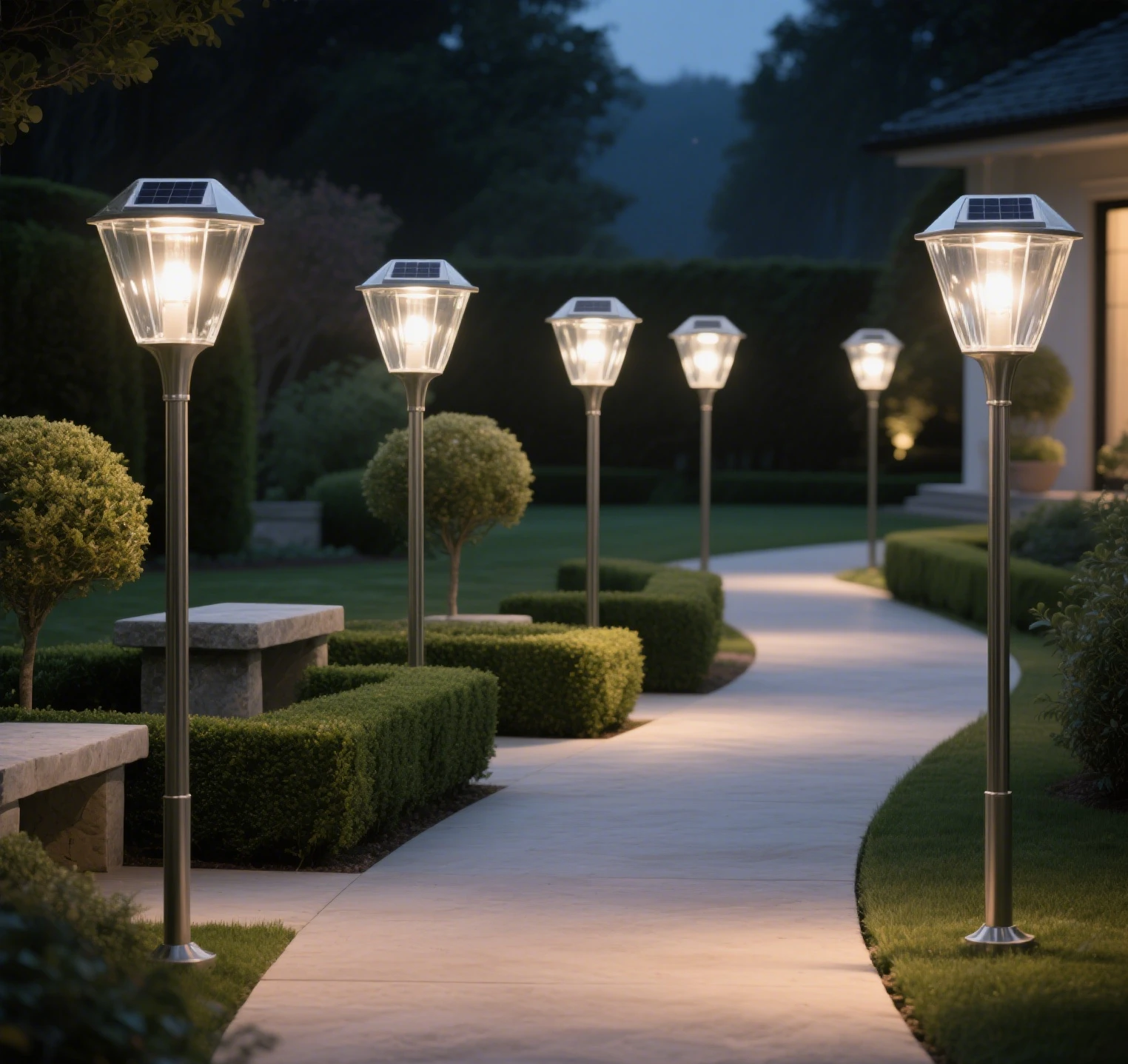Harnessing the power of the sun to illuminate your outdoor spaces is not only environmentally friendly but also a cost-effective way to enhance your home’s ambiance and security. Converting outdoor electrical lights to solar is a practical step toward sustainability, reducing your reliance on the grid while lowering energy bills. This comprehensive guide walks you through the process, from planning to installation, ensuring your solar-powered outdoor lighting project is a success.

Why Convert to Solar Outdoor Lighting?
Switching to solar outdoor lighting offers multiple benefits. It reduces your carbon footprint, as solar energy is renewable and produces no emissions. Additionally, solar lights are often easier to install than wired systems, eliminating the need for extensive electrical work. They’re also low-maintenance, with modern designs built to withstand harsh weather conditions. By leveraging solar energy for outdoor lighting, you can illuminate pathways, gardens, or patios without increasing your electricity costs, making it an attractive option for eco-conscious homeowners.
Moreover, solar-powered lights are ideal for areas where running electrical cables is impractical, such as remote corners of your yard or rural properties. With advancements in solar panel technology, today’s solar lights are more efficient and reliable than ever, offering bright illumination even in regions with less consistent sunlight.
Understanding the Components of Solar Lighting Systems
Before diving into the conversion process, it’s essential to understand the core components of a solar lighting system:
- Solar Panels: These photovoltaic cells capture sunlight and convert it into electricity. The efficiency of solar panels for outdoor lights depends on their size, material (e.g., monocrystalline or polycrystalline silicon), and placement.
- Rechargeable Batteries: Batteries store energy generated during the day for use at night. Common types include nickel-cadmium, sealed lead-acid, or lithium-ion batteries, each with varying lifespans and performance levels.
- Charge Controller: This device regulates the energy flow to prevent overcharging or discharging, extending battery life.
- LED Bulbs: Solar LED lights are energy-efficient and durable, making them ideal for outdoor use. They consume less power than traditional bulbs, maximizing the stored energy.
- Inverter (Optional): For systems requiring AC power, an inverter converts DC electricity from the battery to standard AC power.
- Photoresistor or Timer: These components automatically turn the lights on at dusk and off at dawn, enhancing convenience.
Understanding these elements ensures you select the right equipment for your solar outdoor lighting conversion.
Step-by-Step Guide to Converting Outdoor Electrical Lights to Solar
Step 1: Assess Your Current Lighting Setup
Begin by evaluating your existing outdoor electrical lighting system. Identify the number of lights, their wattage, and their purpose (e.g., pathway lighting, security lighting, or garden lighting). Calculate the total energy consumption to determine the size of the solar power system needed. For example, a 60-watt incandescent bulb can be replaced with a 7-watt LED bulb for equivalent brightness, significantly reducing energy demands.
Check the condition of your lamp posts or fixtures. If they’re in good shape, you may only need to replace the bulb and add a solar conversion kit. If the fixtures are outdated or damaged, consider investing in new solar lamp post lights designed specifically for solar use.
Step 2: Plan Your Solar System
Careful planning is critical for a successful conversion. Consider the following factors:
- Sunlight Availability: Ensure your solar panels receive adequate sunlight, ideally 6–8 hours daily. Avoid shaded areas under trees or buildings, as shadows can reduce efficiency. According to the U.S. Department of Energy, solar lighting systems work best when panels are tilted at an angle equal to your location’s latitude for optimal sunlight capture.
- Battery Capacity: Choose a battery with enough capacity to power your lights through the night. For example, a 20Ah deep-cycle battery can support several solar LED lights for 8–10 hours.
- Panel Wattage: A 100-watt solar panel is often sufficient for small-scale outdoor solar lighting projects, but larger setups may require multiple panels.
- IP Rating: Select components with an Ingress Protection (IP) rating of 44 or higher for weather resistance, ensuring durability against rain and dust.
Draw a configuration plan, mapping out where panels, batteries, and lights will be placed. If you’re converting multiple lights, consider whether each will have its own panel or share a central solar power system.
Step 3: Gather Necessary Materials
To convert your outdoor electrical lights to solar, you’ll need:
- Solar panels (monocrystalline or polycrystalline for higher efficiency)
- Rechargeable batteries (lithium-ion preferred for longevity)
- A charge controller with a timer or photoresistor
- Solar LED bulbs compatible with your fixtures (typically 12-volt for battery-powered systems)
- Weatherproof enclosure for batteries and controllers
- Mounting hardware for panels and fixtures
- Tools: wire cutters, strippers, voltage detector, and screwdriver
- Optional: solar conversion kit for lamp posts, which includes a pre-assembled panel, battery, and controller
For safety, ensure all components are rated for outdoor use. If you’re repurposing existing fixtures, verify that they can accommodate solar LED bulbs.
Step 4: Disconnect Electrical Power
Safety is paramount when working with electrical systems. If your current lights are connected to the mains, hire a licensed electrician to disconnect them. This step involves isolating the power at the circuit breaker and safely capping any exposed wires with wire nuts. Never attempt to work with live electrical lines unless you’re qualified.
If your lamp posts have no electrical or gas connections, you can skip this step and proceed to installing the solar lighting system.
Step 5: Install the Solar Components
Mount the Solar Panel
Install the solar panel on a sturdy, adjustable mount to optimize its angle for sunlight exposure. For example, a tilt angle of approximately 49 degrees is ideal in some regions for maximum energy harvest, as noted in a 2022 study on solar photovoltaic systems. Secure the panel to a pole, roof, or ground mount, ensuring it’s unobstructed by trees or structures.
Set Up the Battery and Charge Controller
Place the battery and charge controller in a weatherproof enclosure, ideally near the panel to minimize energy loss through long cables. Connect the solar panel to the charge controller, then link the controller to the battery. Use appropriately gauged cables to handle the current; for instance, a 24-volt system requires less amperage than a 12-volt system, reducing cable thickness needs.
Replace Bulbs or Fixtures
If your existing fixtures are compatible, swap out incandescent or halogen bulbs for solar LED bulbs. For lamp posts, consider solar lamp post lights with integrated panels and batteries, which simplify installation. Secure the fixture to the post with a base and tightening screws, following the manufacturer’s instructions.
Wire the System
Connect the battery to the lights via the charge controller, ensuring proper polarity (positive to positive, negative to negative). Use outdoor-rated cables, such as 12-14 gauge outdoor lighting cables, for durability. Test the connections with a voltage detector to confirm functionality before finalizing the setup.
Step 6: Test and Adjust
Once installed, test your solar-powered outdoor lighting system during the day to ensure the battery charges correctly. At night, verify that the lights turn on automatically and provide adequate brightness. Adjust the solar panel angle if necessary to maximize energy capture, especially during winter months when sunlight is weaker.

Tips for a Successful Conversion
- Choose Energy-Efficient Bulbs: Solar LED lights consume less power, extending battery life. Look for bulbs with high lumens per watt for maximum brightness.
- Regular Maintenance: Clean solar panels periodically to remove dust or debris that can reduce efficiency. Check battery health annually, as most last 3–5 years.
- Consider Motion Sensors: For security lighting, opt for lights with motion sensors to conserve battery power when illumination isn’t needed.
- Plan for Cloudy Days: Oversize your battery or panel capacity slightly to account for reduced sunlight during overcast weather.
- Recycle Old Components: Properly dispose of old electrical components, such as batteries and bulbs, to minimize environmental impact. Solar lighting systems often use hazardous materials like lead or lithium, which require responsible recycling.
Benefits and Challenges of Solar Conversion
Converting to solar outdoor lighting offers significant advantages. It’s cost-effective over time, as you eliminate electricity costs and reduce maintenance expenses. Solar-powered lights are also versatile, available in styles like solar fairy lights, solar pathway lights, or solar floodlights, catering to various aesthetic and functional needs.
However, challenges exist. Solar lights depend on consistent sunlight, which can be a limitation in cloudy or northern regions. Initial costs for high-quality solar panels and batteries can be higher than traditional lighting, though prices have dropped significantly in recent years. Additionally, improper disposal of solar lighting system components can contribute to e-waste, so always follow local recycling guidelines.
Unique Considerations for Your Project
To make your solar outdoor lighting conversion stand out, consider integrating smart technology. Some solar lights now feature app-controlled settings, allowing you to adjust brightness or schedules remotely. For example, pairing solar LED lights with a smart home system can enhance security lighting by syncing with motion sensors or cameras.
Another innovative approach is to repurpose existing structures creatively. For instance, mounting solar panels on shade sail posts, as one DIY enthusiast did, combines functionality with aesthetics. This dual-purpose design not only powers your lights but also enhances your outdoor space’s visual appeal.
Conclusion
Converting outdoor electrical lights to solar is a rewarding project that blends sustainability with practicality. By carefully planning your solar lighting system, selecting high-quality components, and following safe installation practices, you can create a reliable, eco-friendly lighting solution for your home. Whether you’re illuminating a garden path, securing your property, or adding ambiance with solar fairy lights, this conversion reduces your environmental impact while enhancing your outdoor experience. Start your journey toward solar-powered outdoor lighting today and enjoy the benefits of harnessing the sun’s energy.


Leave a Reply